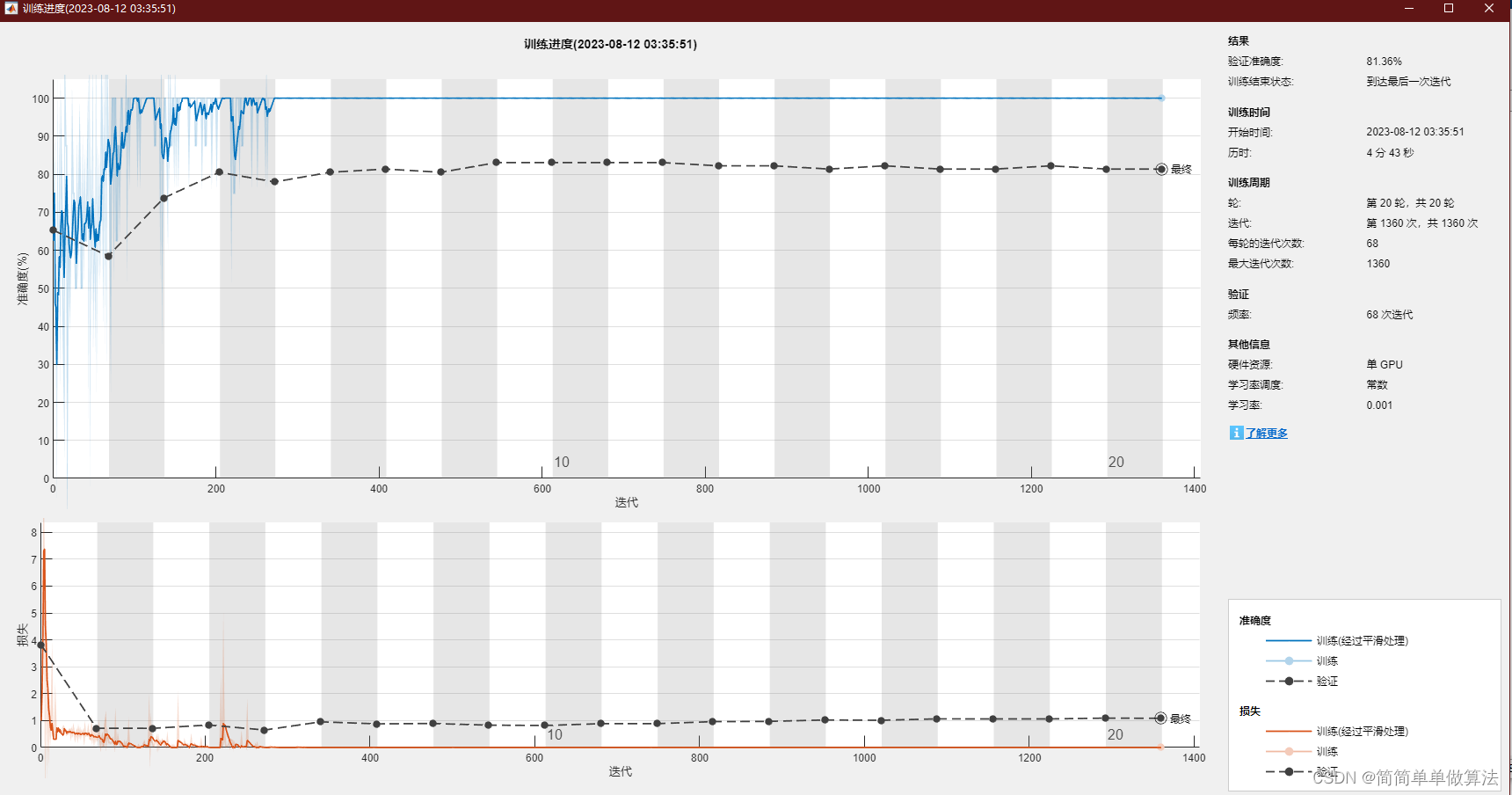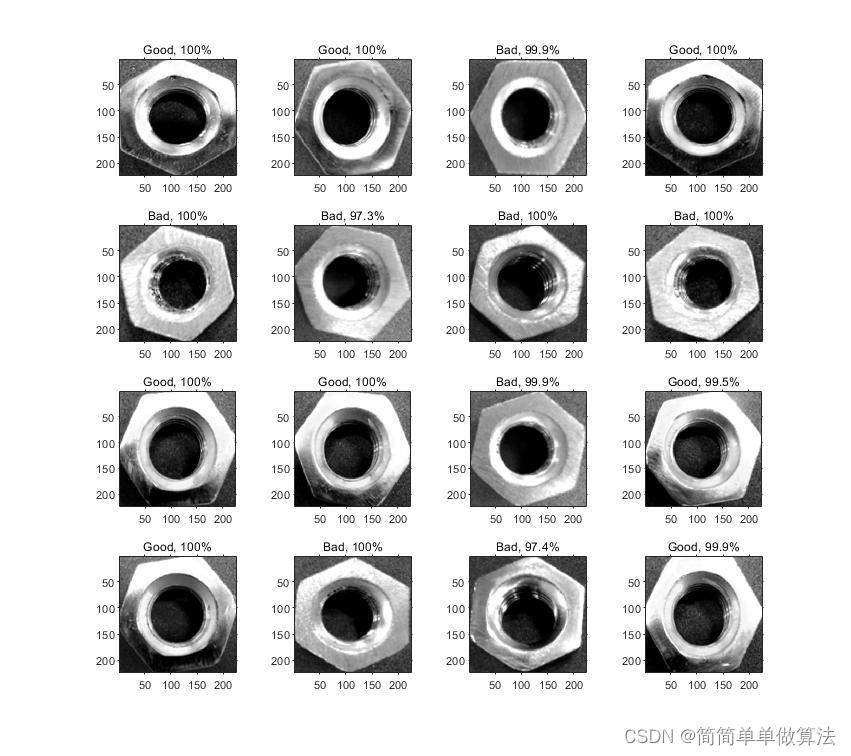Table of contents
1. Preview of algorithm operation renderings
2.Algorithm running software version
4. Overview of algorithm theory
5. Algorithm complete program engineering
1. Preview of algorithm operation renderings


2.Algorithm running software version
matlab2022a
3. Some core programs
....................................................................................
% 获取网络层名称和类别数
% 训练设置参数
maxEpochs = 20;
Minibatch_Size = 8;
Validation_Frequency = floor(numel(Resized_Training_Dataset.Files)/Minibatch_Size);
Training_Options = trainingOptions('sgdm', ...
'MiniBatchSize', Minibatch_Size, ...
'MaxEpochs', maxEpochs, ...
'InitialLearnRate', 1e-3, ...
'Shuffle', 'every-epoch', ...
'ValidationData', Resized_Validation_Dataset, ...
'ValidationFrequency', Validation_Frequency, ...
'Verbose', false, ...
'Plots', 'training-progress');
% 在调整后的数据集上训练网络
net = trainNetwork(Resized_Training_Dataset, New_Network, Training_Options);
% 保存训练后的网络模型
save gnet.mat
534. Overview of algorithm theory
VGG was proposed by the famous research group vGG (Visual Geometry Group) of Oxford University in 2014, and won the first place in the Localization Task (positioning task) and the second place in the Classification Task (classification task) in the imageNet competition that year. The first place in Classification Task is GoogleNet. GoogleNet is a deep network structure developed by Google. The reason why it is called "GoogLeNet" is to pay tribute to "LeNet". Human behavior and action recognition is one of the important applications in the field of computer vision and deep learning. In recent years, deep learning networks have achieved remarkable results in human behavior and action recognition.
1. Principle
1.1 Deep learning and convolutional neural network (CNN)
Deep learning is a machine learning technology that simulates the connections between neurons in the human brain by constructing a multi-layer neural network to achieve data learning and feature extraction. . Convolutional neural network (CNN) is an important structure in deep learning, especially suitable for image recognition tasks. It extracts and learns the features of images layer by layer through convolutional layers, pooling layers and fully connected layers.
1.2 GoogLeNet
GoogLeNet is a deep convolutional neural network proposed by Google in 2014. It introduces the Inception module to solve the problems of too many parameters and large amount of calculation in deep networks. The Inception module uses convolution kernels of different sizes and pooling operations to extract features in parallel and then stitch them together to obtain a richer feature representation.
GoogLenet network highlights
1. Introduced the Inception structure (fusion of feature information at different scales)
2. Use 1x1 convolution kernel for dimensionality reduction and mapping
3. Add two auxiliary classifiers to help training
4. Discard the fully connected layer and use average Pooling layer (dramatically reduces model parameters)

2. Implementation process
2.1 Data preprocessing
In the ore type recognition task, it is first necessary to prepare a marked data set, including images or video frames of different behaviors. Then, the image is preprocessed, including image resizing, normalization and other operations, in order to be input into the deep learning network.
2.2 Building a network model
The GoogLeNet model can be built through deep learning frameworks such as TensorFlow or PyTorch. The basic structure of the model includes convolutional layers, pooling layers, Inception modules and fully connected layers. The network can be modified and customized according to specific tasks.
2.3 Data input and training
The preprocessed image is used as input, and the output of the network is obtained through forward propagation. Then, by comparing with the label, the loss function is calculated and backpropagated to update the weight parameters of the network. Through multiple iterations of training, the network gradually learns features and improves recognition capabilities.
2.4 Model evaluation and tuning
During the training process, the data set needs to be divided into a training set, a validation set, and a test set. Monitor the performance of the model through the validation set, and tune the model based on the performance of the validation set. Evaluate on the test set to get the recognition accuracy of the model on unseen data.
5. Algorithm complete program engineering
OOOOO
OOO
O